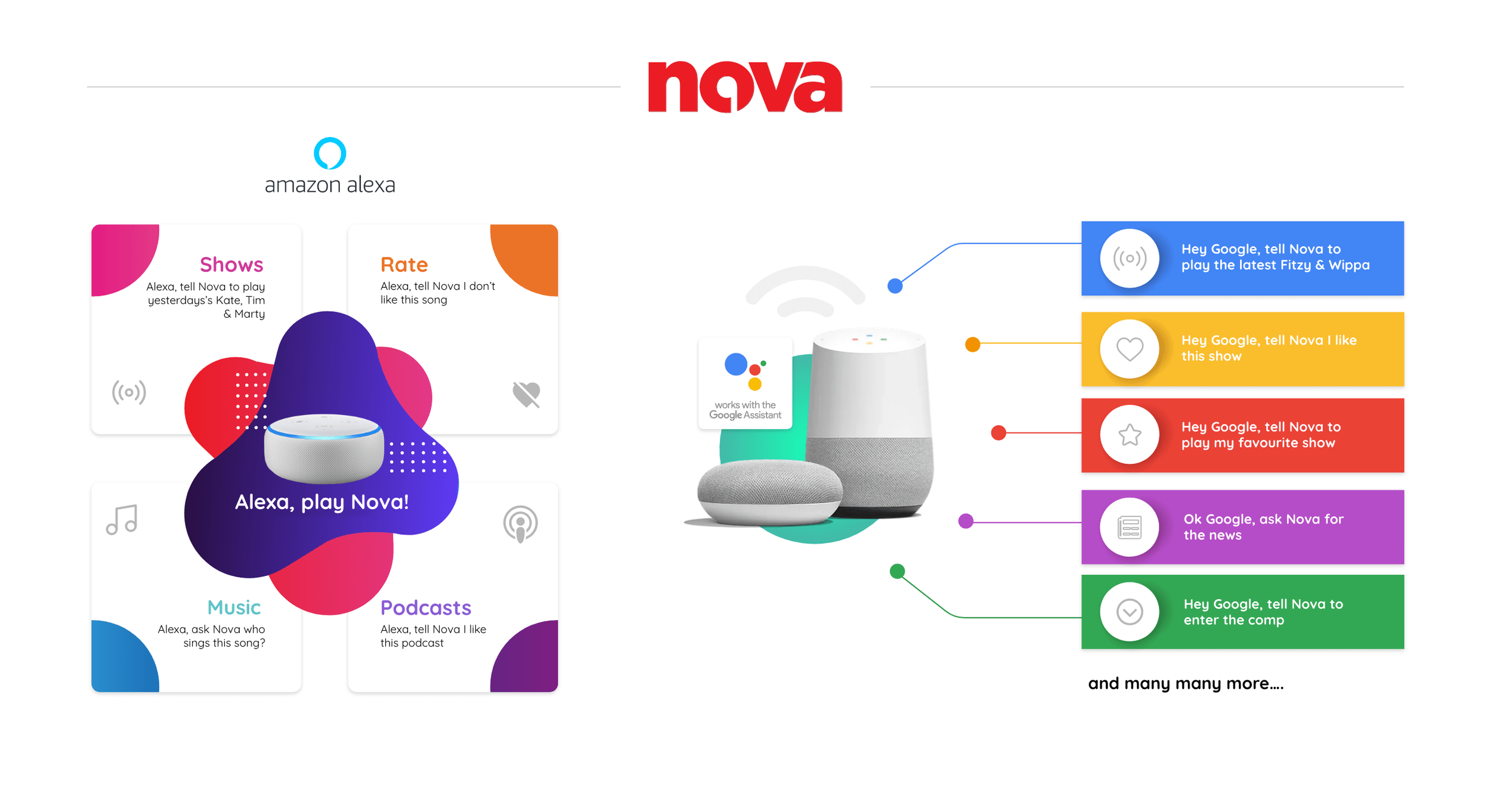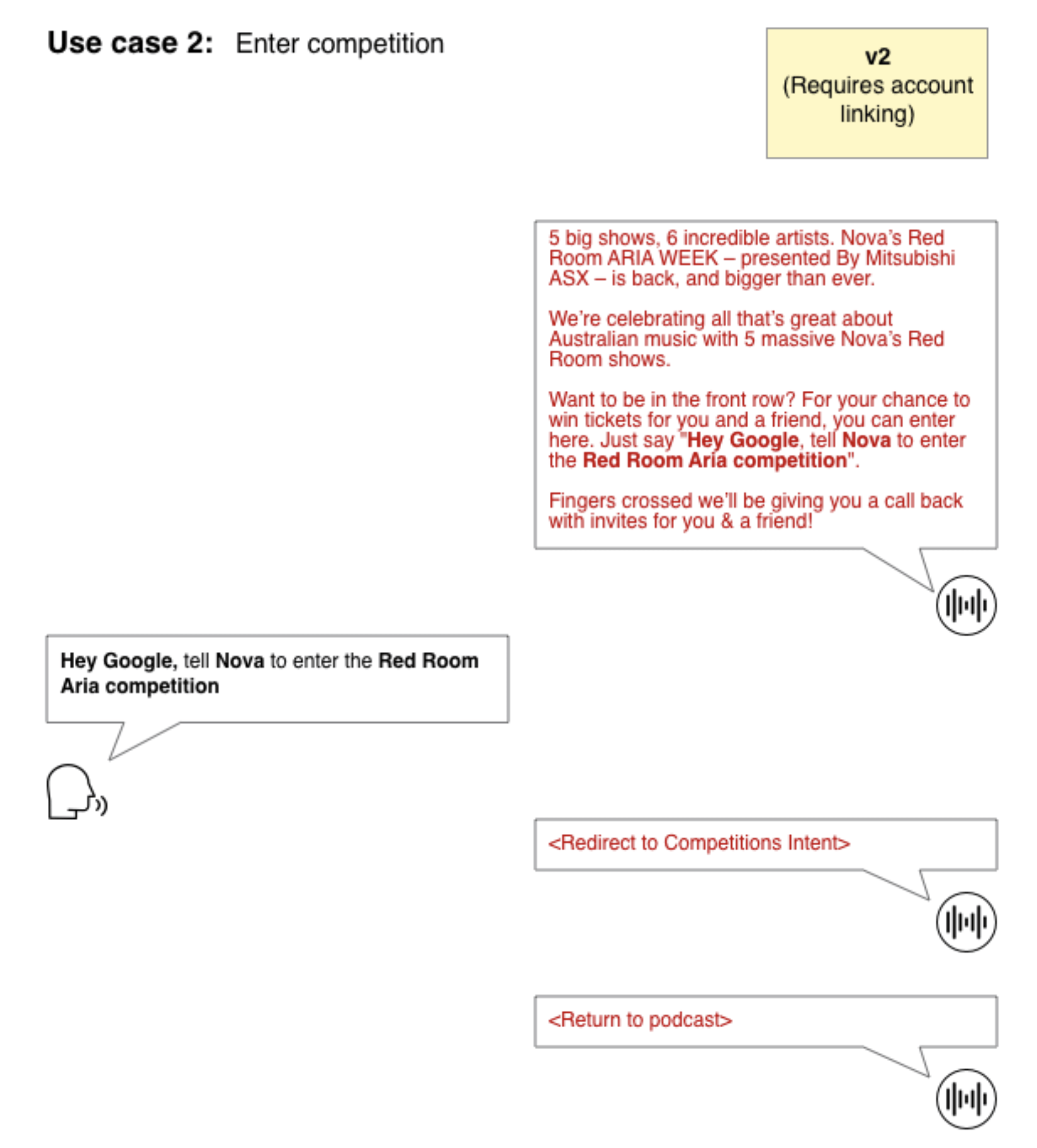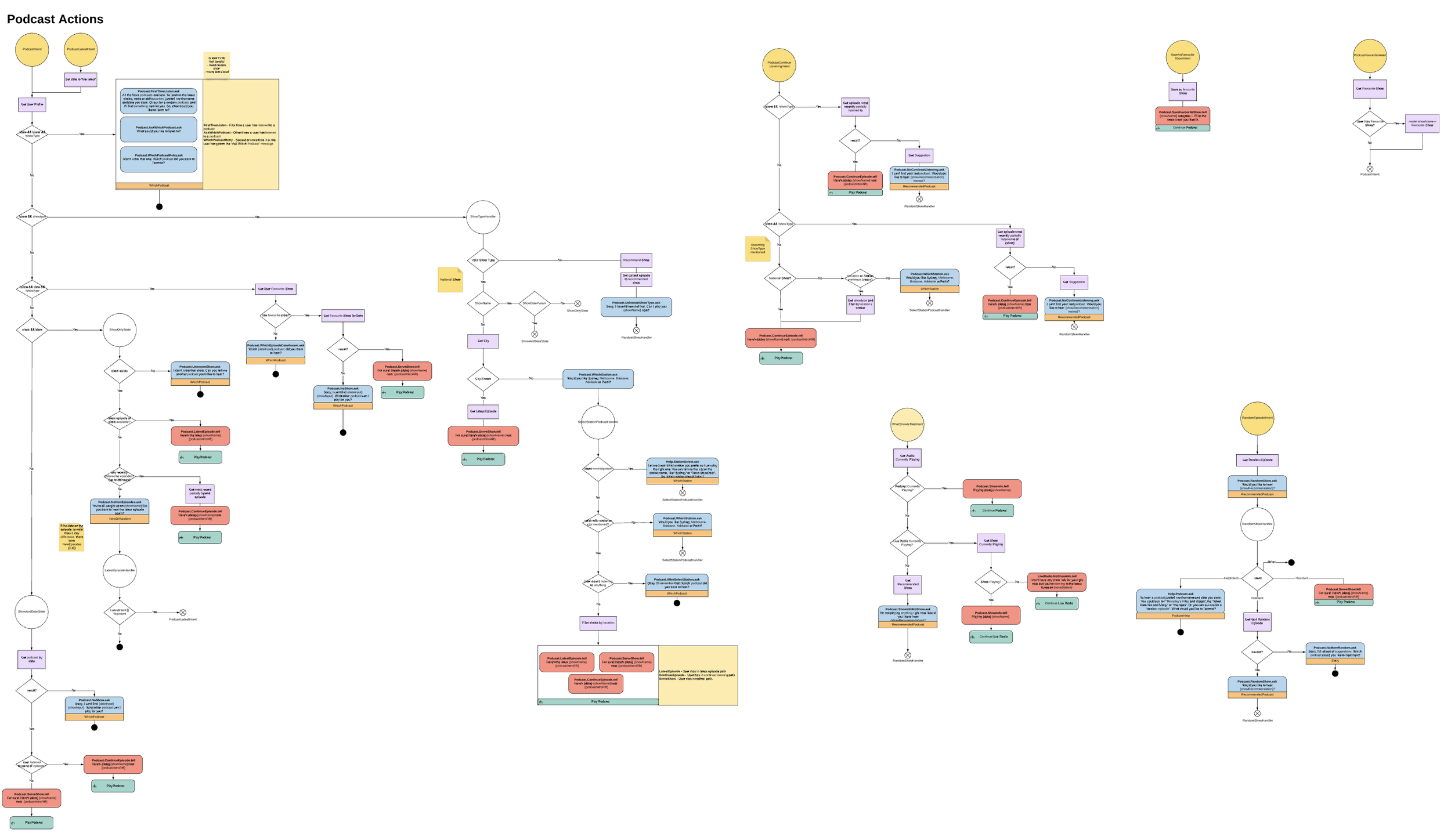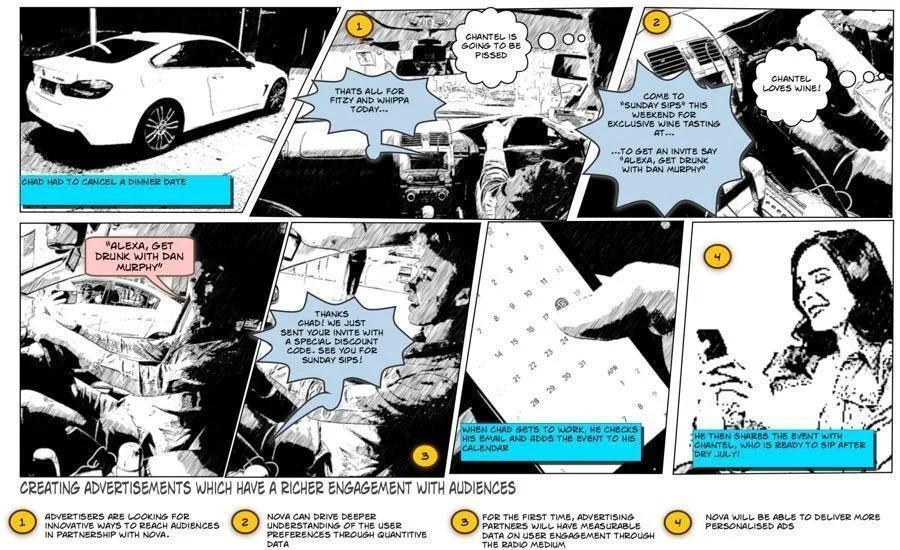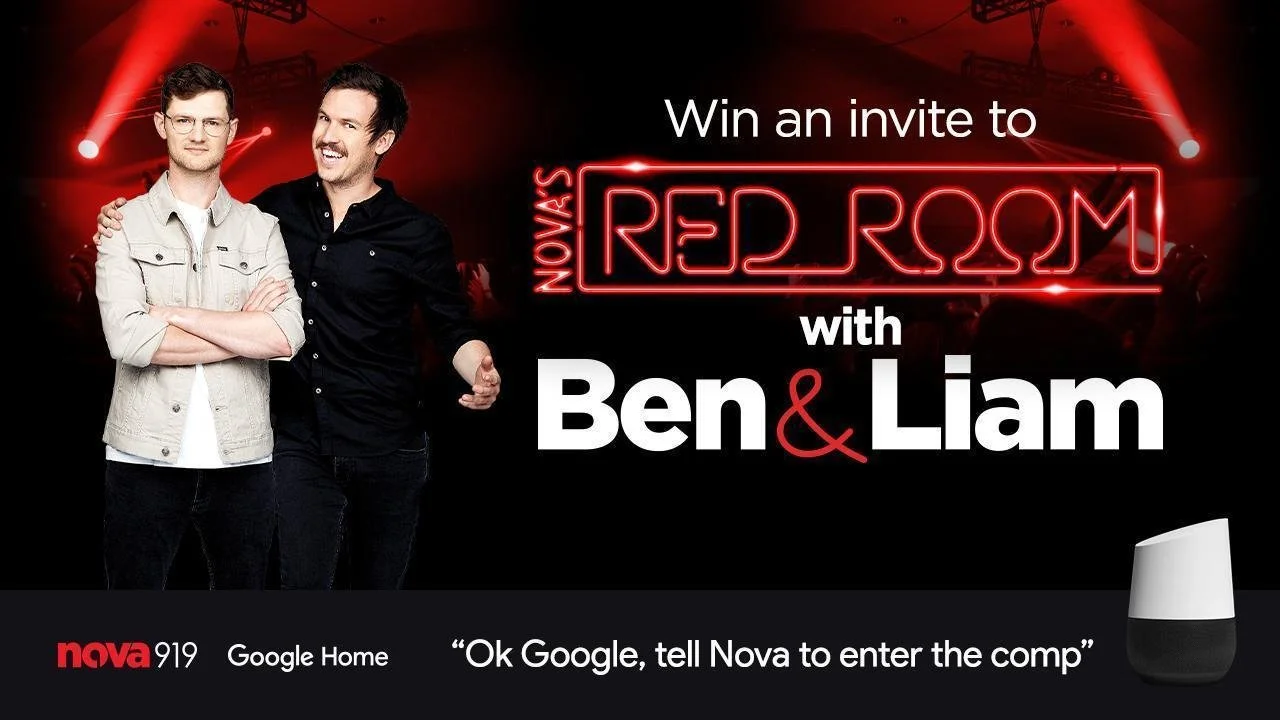Voice Experience Design
Industry Background
There has not been a great deal of innovation in the Radio industry for a long time, so it was ripe for disruption. With on-demand music services becoming prolific in the daily lives of consumers, the place of radio has become more vague. Research has revealed most Australians don’t own a radio at home, and the majority of radio consumption is still during the drive to work and home.
Nova could see the opportunity to innovate with the surge of smart speaker use in the market.
My Role
I was headhunted by Nova’s Chief Digital Officer to build the Experience Design team and lead the design of voice experiences from a HCD point of view. He had worked with me on another major design project in the past and believed I was best suited to take the practices of UX and apply them to the very new VUI space. I was to manage the UX team and also lead the smart speaker program of work. Initially there was no voice team except myself, but eventually Kathryn Sadler (VUI Designer) and Patrick Catanzariti (Software Engineer) joined Nova and we became an in-house voice delivery team.
THE PROCESS
Market Research
My research revealed that smart speakers today are where smart phones were in 2007; everyone knew there was potential, but it took a few years before our smartphones really became an important part of our lives. Many early smartphone apps were quite simple and often gimmicky. The value of having a small supercomputer in your pocket wasn’t fully comprehended until the industry matured and innovated. Similarly today businesses know there’s potential for voice assisted intelligence in consumers’ lives, but no one has fully worked out what that means and how to commercialise it. As a consequence the early adopters of smart speakers are not doing much beyond asking their speakers for the weather, time and music services.
Nova has very engaged listeners and a strong brand so there was an opportunity to innovate, test and learn. Nova’s ambition was to be the first radio station in Australia to release a skill (Alexa) or action (Google Home).
Ideation
In order to deliver value to the business it was important to engage various stakeholders to find out what solution would work for them commercially. While basic features such as live radio streaming and access to podcasts were already on our roadmap to deliver, we wanted to release commercially viable actions/skills that would benefit both our clients and listeners.
A wide range of use cases were identified and I facilitated workshops with our colleagues in Sales across the country to explore the commercial viability of these.
The voice team walked away with a list of ideas to design and explore for technical feasibility.
Nova’s online competitions already had high engagement and we saw this as the next logical feature to bring into the smart speaker domain. Competitor research revealed no one else had delivered competitions via voice before. There was a gap in the market.
In order for listeners on smart speakers to become aware of our competition and enter through a conversation only, it was necessary to run ads that were interactive. This was also a world first and this functionality generated tremendous interest from the commercial team as they could sell it to clients easily.
Further investigation revealed that users would need to be signed-in for the smoothest entry experience, which led us to the account-linking feature. Without account-linking, competition entry participants could not be identified should they be winners.
Design & Testing
VUI flows were designed and prototyped in Voiceflow. The benefit of using Voiceflow is that it’s easy to use and also allows the voice designer to insert audio files such as production quality radio ads to create a very close simulation of the final voice experience.
This leads to quality prototypes where often the end user was not able to articulate if they were hearing a simulation or the real live action/skill. The prototype helped us quickly iterate and refine the voice experience, without needing engineers to hardcode any solutions before we were ready. After internal guerrilla testing, the VUI flow was improved further and the voice engineer began development.
The one differentiator between VUI design and GUI design is that designing a VUI requires a lot of technical knowledge and is heavily dependent on the capabilities of the platform you are designing for. Our first learning was that the experience design for Google Home couldn’t be replicated 1 for 1 on Alexa, due to each platform’s differences.
The second learning was that more than ever, design and engineering need to work very closely to build solutions that meet business and customer needs.
Throughout my career I have always built strong relationships with my colleagues in engineering and know first-hand the importance of both disciplines collaborating. But in the delivery of multiple skills and actions by our team, I have come to see this as non-negotiable. While in some companies I’ve seen design and engineering teams work in silos to deliver digital solutions, I see no possible way that a successful voice project can be delivered in this manner.
The next challenge of VUI is the lack of graphical interface to guide users through the experience. Whereas an app or website experience can be simplified to guide the user through the customer journey, voice experiences have no graphical component to provide guidance.
This became very evident in customer testing, where users struggled to speak naturally to smart speakers out of fear of “saying it wrong”, and not having the visual guidance they are used to with visual experiences.
As researchers we are able to put their mind at ease by explaining that there are no wrong ways of using speakers, much like we would with app and website testing.
But the fact remains that with GUI testing, the visual indicators on the interface give users clues, which do not exist with VUIs. This adds a certain level of difficulty to interactions with smart speakers, as the possible paths for the user are unknown and hence could be numerous.
Regardless, for the time being our research revealed that users needed to be educated in what to say to the speaker. Because the Nova action is a secondary application on top of the Google platform, users must provide the invocation (in this case ‘Nova’) explicitly. It doesn’t feel natural to users however.
It is a consequence of the way these platforms from Google and Amazon are built, and for the time being voice engineers and designers must be conscious of it.
I expect it will be some time before end users are comfortable speaking to “smart” speakers and begin to learn that secondary apps (such as Nova) must be requested directly. And perhaps user testing these experiences will start to feel more natural.
To help our commercial colleagues share and sell the ideas we were designing, I found storyboards a simple way of visualising the voice journey for clients.
Outcome
In order to ‘test and learn’ we launched the interactive ad experience on the new Ben & Liam breakfast show, geo-targeted to South Australia. This was a small and contained listener group which could provide us with valuable lessons for future larger voice competitions.
For the first time, listeners could enter a Red Room competition using their voice only – no need to use a desktop or phone to fill in forms. Everything was handled through their voice alone, including account linking.
After the success of the South Australia campaign, we launched a similar campaign nationally for the Fitzy & Wippa show, taking on the learnings from the first campaign.
The smart speaker work won “Best Innovation” at the Nova Entertainment awards.
Listeners who entered the voice competition had positive feedback:
“…this is innovative and awesome. Well beyond what I would have expected.”
“Love the innovative way to enter … keep on leading the way Nova!”
“This is next level! I love it!”
And finally, our innovation received much industry interest and press:
Mumbrella: Nova introduces interactive audio commercials as next phase in voice strategy
RadioInfo: Nova adds activation and interaction to its advertising
CMO: Nova’s voice-enabled advertising prompted by voice command popularity
Live24x7News: Nova Entertainment creates interactive audio commercials
MediaWeek: Nova Entertainment creates interactive audio commercials
Bandit: Nova Extends Voice Strategy with Interactive Ads
Demo of the Interactive Ad and Voice Competition
